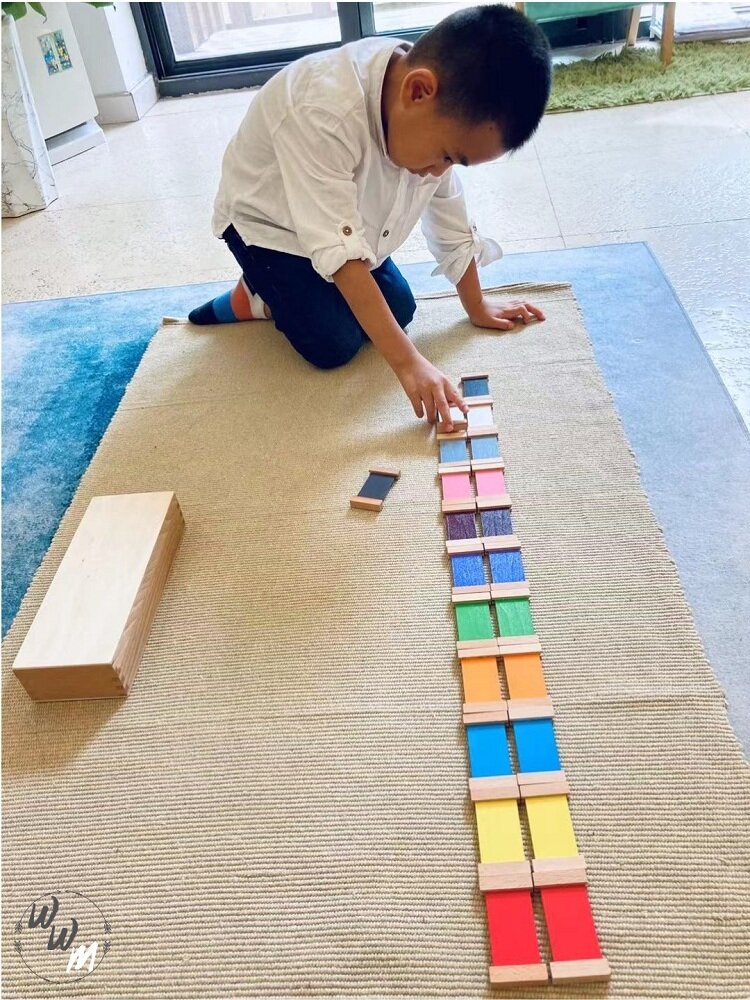Colour Box Two (presentation one)
What is Colour Box Two?
In this activity, the child learns how to match primary, secondary, tertiary, and neutral colours. This will be done with the Colour Box Two. Colour Box Two is a long wooden box in the Sensorial area in a Montessori classroom. This wooden box contains 22 colour tablets, one set of primary colours, one set of secondary colours, one set of tertiary colours, and one set of black and white for the neutral colours.
Matching Colour Box two
How is the first presentation done with Colour Box Two?
The directress asks the child to unroll the floor mat vertically. She begins by taking the primary colours. She asks the child if he remembers what these colours are called. She places red, yellow, and blue vertically down on the left-hand side of the floor mat, with the other set of the primary coloured tablets to the right laying randomly on the mat. She asks the child to match red with red, yellow with yellow, and blue with blue, just like the child previously learnt with matching Colour Box One.
The child continues in the same manner with the secondary, tertiary, and neutral colours, until all of the colour tablets have been matched correctly.
What does the child learn by doing the first presentation with Colour Box Two?
The child becomes more familiar with primary, secondary, tertiary, and neutral colours, the child is developing his fine motor skills when holding the tablets correctly on the white borders, the child gets further practice in matching, as well as this activity encourages the child to be patient and concentrated.
Looking for more Montessori activities?
Here is the full list of the Montessori tasks, including Visual and Muscle Discrimination Sense activities, Tactile Sense activities, Chromatic Sense activities, Auditory Sense activities, Thermic Sense activities, Gustatory Sense activities, Baric Sense activities, Olfactory Sense activities, Stereognostic Sense activities, Geometry activities, and Algebra activities. Just click on the activity you want to learn about to go there.
Visual and Muscle Discrimination Sense activities
Tactile Sense activities
Chromatic Sense activities
Auditory Sense activities
Thermic Sense activities
Baric Sense activities
Olfactory Sense activities
Stereognostic Sense activities
Geometry activities
Algebra activities

